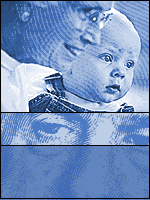Contaminated Water in OH Portends Other Issues
Clipped this article from a water technology auto emailer that I receive on a daily basis (left over from my days of being a project engineer for a water treatment company). Discusses the details of a mass water-borne sickness that affected a little island in Lake Erie called South Bass Island and a little resort town called Put-In-Bay. The more complete version (gone now from the website) talks about the mass contamination of private wells in 2004, and that hundreds of people were sickened with symptoms such as nausea, headaches, vomiting and diahrrea. Out of 79 wells tested, 78% tested positive for fecal coliform and 31% tested positive for E.coli. Three possible sources were discussed:- Leaky sewerage pipes allowed untreated sewage to seep into the island's aquifer.
- Water from Lake Erie infiltrated the aquifer, water that was not entirely safe to drink.
- Cross-linking between city water lines and water lines fed from wells on the island itself.
The article described that once authorities asked people to switch to bottled water to drink, the cases of coliform sickness dropped dramatically. The authorities have taken a few steps to alleviate the problem (off the top of my head):
- plugged the cross-linked ports between city water and well-fed lines
- added capacity to the water treatment plant, almost doubling the gallon capacity to 432,000 per day
- wells that were found to be contaminated are to be replaced with city water lines
It seems to me that while these fixes are sensible, there are two things that are very important are the first two points that were hypothesized as possible sources of the contamination - if the sewage lines are leaking, shouldn't they be replaced, or at least lined? There are great, inexpensive solutions to line concrete sewage lines with plastic liners, for example.
The biggest issue not touched on, however, is the infiltration of Lake Erie water into the aquifer. Fundamentally, this means that the people of the island are taking more out than the aquifer is able to recharge with clean, fresh water. This has been an issue for years in places like Florida, which has to fight sinkholes in the central inland areas (like Orlando) and the coast (Tampa) where seawater now infiltrates the local aquifer there. In southern CA, they have the same problem and they fight this with tertiary treated water (meaning physical clarification, then biological treatment followed by some sort of membrane separations before leaving the plant) being re-injected into wells dug near the coast to balance out the osmotic pressure and, essentially, force out the seawater from the aquifer. Fundamentally, when aquifers are infiltrated like this, it means that the land cannot sustain the human popuation. Florida, in 1995, was predicted to have about 10 years before they overreached on capacity to sustaina human population. They are fighting this in Tampa, for example, by building one of the planet's biggest reverse osmosis plants to supply fresh water from seawater.












0 Comments:
Post a Comment
<< Home